With National Science Week 2012 having started today, you might want to consider stepping outside and looking at the night sky. Sadly one thing you won’t see from most of Australia is meteors from the Perseid meteor shower contrary to coverage in media coverage coming from the Northern Hemisphere (although if you are reading this in the Northern Hemisphere, you might want to visit this NASA page about the shower). The first and most important reason why most of Australia won’t see the Perseids is that the point in the sky the meteors will appear to come from is located low on the horizon as seen from most of Australia. This means that very few of the meteors from the dust cloud which impact the Earth’s upper atmosphere and are seen as meteors make it this far South. A second reason why we won’t see the peak of the Perseids is that the constellation will be below the horizon at the time (Sunday 12 August 10:oopm to Monday 13 August 12:30am AEST). If you are really keen, you can listen to the Perseids courtesy of NASA and Spaceweather.com.
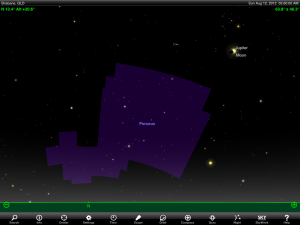
So what can you see? Well if you are an early morning riser, you might like to look at Jupiter and Venus in the pre-dawn sky. Both planets appear as very bright stars above the North East horizon. What makes the next few mornings special is that the Moon will be located below each planet making them even easier to find.
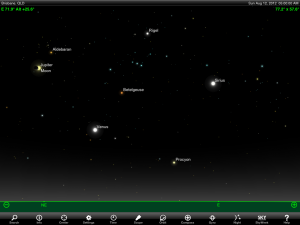
Above: The location of Jupiter and Venus in the morning pre-dawn sky.
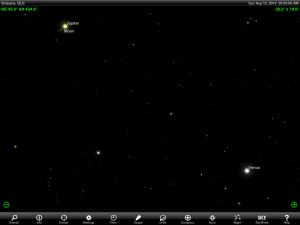
Above: Tomorrow morning (Sunday 12 August 2012) the waning crescent Moon will be located below Jupiter in the predawn sky.
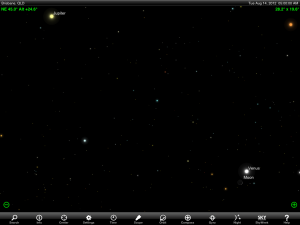
Above: Tuesday morning (14 August 2012) the waning crescent Moon will be located below Venus in the predawn sky.
If you are like me and are not an early riser, you might like a different challenge. Very few people can say they have seen a planet in the day sky – even with a telescope. To be far, not many people know you can. It is tricky however, and is easier to do if you have something to focus on next to the planet. It could be a passing cloud or in the case of the next few mornings, the Moon. If you haven’t tried this before, start by finding the Moon around 9am AEST. Once you have found the Moon, stand next to a building or tree so that the Sun is blocked from view but you can still see the Moon. Use the Moon and the below finder charts as a guide to where to look. Be patient and the planet should snap into view. If you have binoculars, they will make it easier to find each planet.
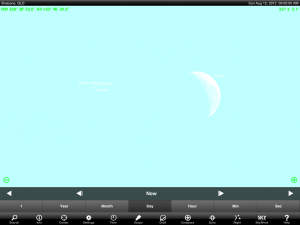
Above: Look to the left of the Moon to see Jupiter during the day. Chart for 9am AEST on Sunday 12 August 2012.
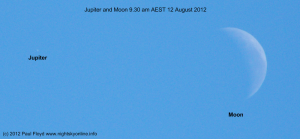
Above: (Updated 12 August 2012) Jupiter and the Moon during the day. Photograph taken at 9,30am AEST 12 August 2012.
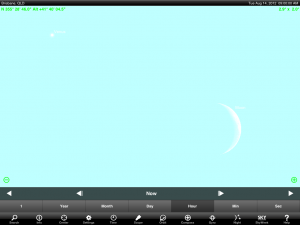
Above: Look to the left of the Moon to see Venus during the day. Chart for 9am AEST on Tuesday 14 August 2012.
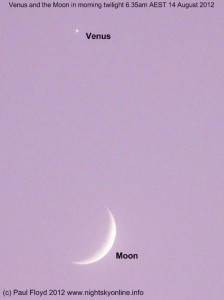
Above (updated 14 August 2012):
1 thought on “Sorry no Perseids! What about seeing Jupiter and Venus during the day?”